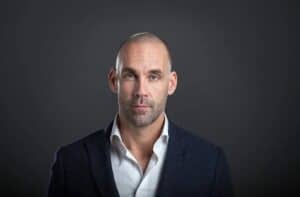Spotting the next big trend is more important than ever in today’s fast-moving world. Whether you’re running a business, building a startup, or launching a new idea, staying ahead of the curve can give you a huge advantage. But trend-watching isn’t just about noticing what’s popular—it’s about digging deeper to understand why it’s happening, what it means, and how it might shape the future. So how do you turn this into a skill you can actually use? By combining observation, research, and a little intuition, you can start identifying patterns and making smarter decisions. Let’s break down how to do it.
Identifying emerging trends
The first step in spotting the next big thing is to closely monitor industries, markets, and cultural shifts. Keeping an eye on emerging technologies, consumer behaviours, and global events provides valuable clues about where the world is heading. Tools like social media platforms, industry reports, and expert blogs serve as rich sources of information. Identifying patterns within this data can reveal early signs of trends on the horizon.
Here are some tips to help you spot emerging trends:
- Follow thought leaders and innovators in your industry on social media to stay updated on fresh ideas and developments.
- Attend webinars, conferences, and networking events to hear firsthand about where industries are heading.
- Dive into data by using tools like Google Trends or analytics platforms to see what’s gaining traction.
- Pay attention to younger generations—they often drive cultural and consumer shifts.
- Collaborate with a diverse group of people to gain unique perspectives that might highlight trends you wouldn’t notice on your own.
The key is curiosity, an open mind, and staying alert to the subtle signals that others might overlook.
Analysing trend data and insights
Once trends are identified, the next step is to dig into the data to understand what they really mean and how they might affect the future. This means focusing on the important details and ignoring the distractions. By looking at things like what people are saying, changes in the economy, and new technology, we can start to see what might happen next. Tools like charts, graphs, and data analysis programs make it easier to spot patterns and connections. The goal is to figure out how these trends could change the way we live, work, or do business. For example, as futurist Richard van Hooijdonk often emphasizes, understanding a trend could help a business decide what products to launch, how to improve services, or even how to stay ahead of competitors. It’s all about using the information to make smarter decisions.
Developing trend forecasting skills
Forecasting trends involves more than just observation and analysis—it requires a visionary mindset. This skill is developed through experience and by constantly engaging with new ideas and innovations. To develop these skills, start by studying past trends and their impact to better understand patterns. Practice scenario planning, which explores multiple possible futures, or use innovation mapping to connect breakthroughs and identify opportunities.
Additionally, focus on building your analytical and creative thinking abilities by taking courses, reading industry reports, and experimenting with predictive tools. Staying informed through continuous learning, attending conferences, and networking with thought leaders can further enhance your ability to forecast trends accurately. Regularly challenging assumptions and seeking feedback on your predictions will further sharpen your skills over time.
Staying ahead of the curve
Finally, the true value of trend-watching lies in applying these insights to stay ahead of the curve. Successful trend watchers don’t just spot trends—they act on them. Whether it’s through launching a breakthrough product, adopting a progressive business model, or repositioning your organization to align with emerging demands, the ability to respond quickly to trends can drive growth and innovation. Being proactive, rather than reactive, is what sets trailblazers apart from the rest.
To strengthen your trend-watching skills, here are a few additional tips:
- Leverage data analysis tools: Use platforms like Google Trends or social listening tools to track and analyze consumer behaviour and industry shifts.
- Stay plugged into your industry: Follow thought leaders, join relevant groups, and subscribe to newsletters or blogs to stay updated on the latest developments.
- Look outside your niche: Inspiration often comes from unexpected places. Explore trends in other industries and think about how they might apply to your field.
- Test and experiment: Spotting a trend is one thing, but testing its potential impact on your business can provide deeper insights. Start small with pilotprojects or A/B testing.
- Collaborate and brainstorm: Bring together a diverse team to discuss trends and generate creative ways to leverage them. Different perspectives can lead to innovative solutions.
In summary, trend-watching combines analytical skills, creativity, and a forward-thinking mindset. By mastering these principles and implementing these tips, you can not only identify emerging trends but also use them to shape future success.
Share via:


